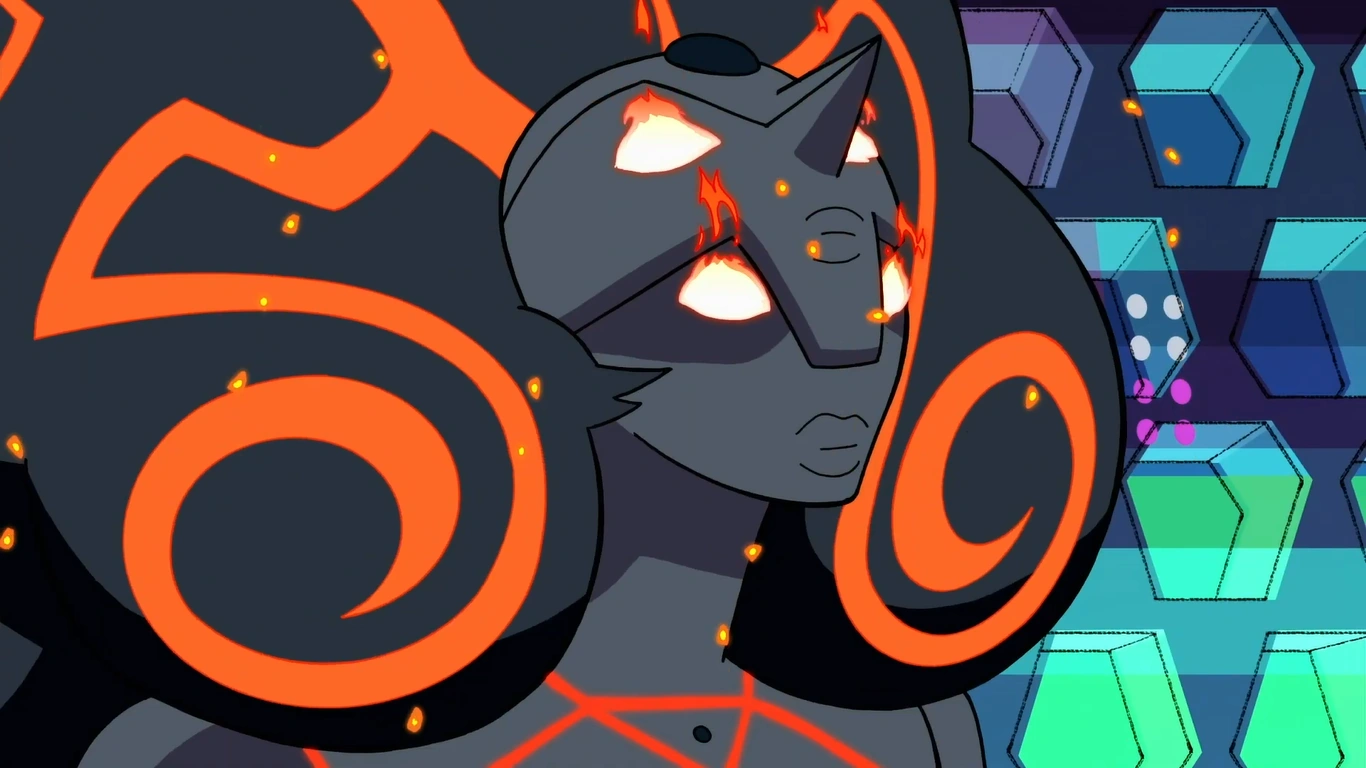*NOTE: Spoilers for “Change Your Mind” up ahead*
I wonder if Cartoon Network truly understands the brilliance of Steven Universe.

If it does, then the network has a funny way of showing it.
Steven Universe, the story of a young boy’s adventurous hijinks with his alien surrogate parents, has one of the most frustrating programming schedules on television: it airs new episodes in “Stevenbomb” clumps and then disappears without word for months on end. Re-runs are few and far between, while other Cartoon Network staples like Teen Titans Go! and The Amazing World of Gumball are multiple times an hour.
In fact, it’s entirely possible that you may have missed “Change Your Mind”, the hour-long season finale that closes out a five-season arc that creator Rebecca Sugar originally pitched. Even though a movie is slated for the fall, and reportedly additional episodes after that, “Change Your Mind” had a decisive air, with massive climatic battles and several resolved story threads that suggests a series finale. It feels appropriate to recognize the significance of Steven Universe’s first five seasons, which “Change Your Mind” only solidified.

More than anything else, Steven Universe is a show about identity. Since its 2013 debut, the show has transcended its initial “slice of life” adventures to eloquently and confidently address the complicated journey towards understanding and accepting one’s self. “Change Your Mind” seeks the resolution to one of Steven’s paths: his reconciliation of his mother’s identity and the impact on his own. Steven has grappled with the loss of his mother, the alien Rose Quartz, since the very beginning, but his concerns evolved in real-time. As he learned more about Rose’s past behavior and relationships, Steven was directly confronted with the failings of his mother and the other Crystal Gems, and whether their actions reflected on him as well.
Dealing with a world made messier by your parents is an inherently-millennial complex, and Steven has worked hard to find reconciliation. In his final confrontation with White Diamond, leader of the Diamond Authority, Steven is browbeaten by his mother’s flaws and how her selfishness and superiority drove his key relationships. Steven had made enough peace with Rose Quartz’s issues where that wasn’t the shattering revelation White Diamond expected it to be. When the verbal failed, she chose a physical approach, brutally ripping his Gem from his body in the most shocking, disturbing sequence the show has ever produced.
The stunning assault created two Stevens; one fully human and one fully Gem, with powers that were strong enough to withstand a full blown attack from White Diamond. That the physical stone transformed into Steven instead of Pink Diamond or Rose signifies Steven accepting and owning his identity as a Gem, but he isn’t completely himself until he rejoins with his human half. His dual identities are no longer at war with themselves; they are both essential, equal, joyous parts, working in tandem to form the utterly unique being that is Steven. For children (and some adults) who are more aware of individual identity, Steven’s maturation around the concept is a powerful affirmation of its importance.

Any discussion of Steven Universe, especially relating to identity, is meaningless without acknowledging its historic LGBTQ+ representation. No other cartoon has explored sexual and gender identity on television with such empathy and grace, if at all. It has given sanctuary to queer relationships, particularly Ruby and Sapphire as Garnet, and offered subtextual understanding of identities that exist outside of the gender binary and mainstream culture’s heteronormativity. The last season transitioned the subtext into plain old text: Ruby and Sapphire formalized formalized their union as Garnet in mainstream animation’s first queer wedding. “Change Your Mind” finds Steven rejecting White Diamond’s insistence that outward appearance dictates inner essence, providing a simple yet powerful link to the transgender experience.
Steven Universe’s commitment to queer representation in children’s entertainment, providing a space for children and adults to discuss it, exceeds the term “radical.” The show treated its relationships like immutable facts, and then used them to examine the underpinnings of successful and unsuccessful romantic relationships. The concept of fusion, besides offering anime-influenced thrills with fantastical designs and incredible powers, helped field honest discussions about sex and the importance of trust, communication, and consent. The power of Steven Universe‘s normalization of queer romance, coupled with its advocacy for health relationship dynamics, cannot be understated. For children coming to terms with their sexual and gender identities, the show’s validation of their experiences and feelings could literally save their lives.

And yet, for all of its thematic resonance and cultural significance, Steven Universe is a silly, absurdist sci-fi fantasy about a young boy with a pink Gem embedded in his stomach. It insists you cast aside your adult trappings for something less cynical and more unabashedly child-like. It trades shamelessly in nostalgia, while also existing firmly in the present with its deconstruction of sociocultural paradigms. It’s a show where a giant fused black woman can pull a lava sword out of her second mouth to literally handicap a white supremacist robot, and that isn’t even the episode’s climax. Steven Universe may trace its roots to the beloved Adventure Time, and cites several other cartoons as influences, but there is no real precedent for its existence.
The show’s future is unknown, but if the series were to declare “Change Your Mind” as its last episode ever, Rebecca Sugar can rest easy knowing that her series has secured its place in the animated canon.

Watch a better show.